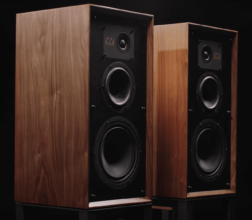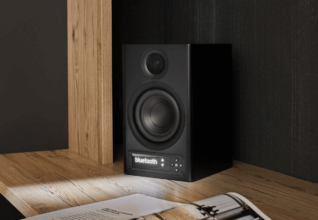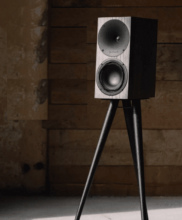JBL L52 Classic Review: New Classic?
BL’s re-released Classic series channels the design language of its Seventies models, and the L52 brings all the principles of the series down to a size where they’ll fit into most spaces. Like the larger L82, the L52 is not a reproduction of a speaker it produced in the Seventies but an ‘inspired by true-life events’ take on the style of the time.

Classic values? It’s difficult to know what expectations are here – a big warm sound, analog smoothness, a genuine wood veneer? Is JBL’s small L52 Classic I’m reviewing here capable of evoking such old-time strengths while avoiding old-time weaknesses that – cough – commonly go unmentioned?
The L52 is a conventional ported two-way, with a 133mm (5.25in) bass/mid-range unit crossing over to a small 20mm titanium dome tweeter (most are 25mm / 1in). A front-mounted port loads the cream-colored Pure Pulp (paper) woofer, and – adding to front panel visual activity – there is a rotary ‘HF level’ (High-Frequency level) control to increase or decrease output from the tweeter, anchored by a 0dB reference position (which I’ll explain later).
Topping off this complex-looking mini, a funky 1970s Quadrex foam grille collects dust from using them back then. Prepare a vacuum sweeper or a blower if long-term cleanliness is important. It may just be that a wash under the tap is best, but I didn’t try it for fear of returning soggy speakers to Harman. Surprisingly, even though the foam is thick, these grilles do not influence treble, measurement showed, so they can be used on or off.
“in Neils Lofgren’s Keith Don’t Go, there was a sense of diamond hard speed that JBL seem to prefer”
The cabinets are solidly built, weighing 5kg (11lbs) each. JBL says they are finished with ‘satin walnut furniture grade wood veneer’ and – surprisingly – they come in mirror image pairs where it is usual to place a tweeter on the inside for the sharpest stereo imaging. Some prefer the wider but more diffuse stage given by placing a tweeter on the outside. Looking at JBL’s specs, they say its impedance is 4 Ohms, and it does sink to that as a minimum, but overall, it is exactly 6 Ohms like most other speakers nowadays, so it’s not an unusual load. Suitable amplifier power is quoted as 10-75W, and this will do, but sensitivity isn’t very high at 85dB, and I’d suggest 40-100W.
ORIGIN USA/China
TYPE 2-way stand mount loudspeaker
WEIGHT 5kg
DIMENSIONS (WxHxD) 197 x 330 x 216mm
FEATURES
• 1x 20mm titanium dome tweeter
• 1x 133mm pulped paper mid/bass driver
• Quoted sensitivity: 85dB/1W/1m (4ohm)
DISTRIBUTOR Harman UK
WEBSITE jblsynthesis.com
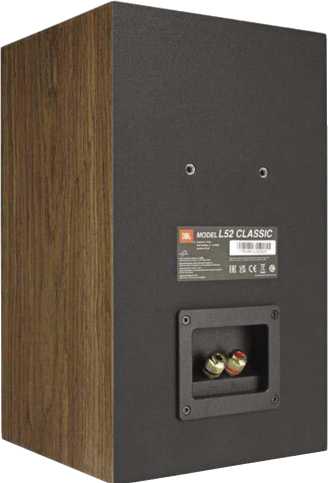
I thought the ‘HF level’ control would raise the treble for a bright sound or lower it for a soft one. Well, it does, but the maximum lift is small at +2dB, while the maximum cut is drastic, the tweeter not working at all, so the behavior is asymmetric: you don’t get a neat +/-5dB, for example. Perhaps not a big deal, but I think a bit more lift would have suited some listeners if not me. In JBL’s favor, the 0dB reference position gave an impressively flat and accurate response – a perfectly wrought starting position.
SOUND QUALITY
The ‘speakers were initially driven by our PrimaLuna EVO 300 Hybrid amplifier, connected through Chord Company Signature Reference screened cables. Sources were an Oppo BDP-205D acting as a CD player – used for its top ES9038 DAC chip and linear power supply – plus hi-res from a MacBook Pro running Audirvana+ software player to deliver in DSD (via DoP) over a USB link.
Running through our wide dynamic range review CDs, I was a little surprised at the brisk modern sound balance of the L52s rather than any hark back to the past. Set flat (0dB), there was a natural balance with no sense of warmth or body to the sound. The result pushed the saxophone forward in the Pink Panther theme, while the plucked bass was somewhere behind and lacked depth. When the orchestra came in, there was some coarseness in the brass section, which was the hard quality expected from a titanium dome. The EVO300 Hybrid amplifier has fast, concise, and brightly lit treble from its output FETs I know, and this did not suit the L52s, so I swapped over to our Creek i20 Voyage amplifier for its softer, easier demeanor, and this proved a more appropriate subjective match.
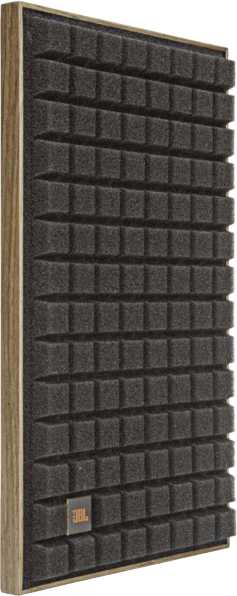
In themselves, the L52s were clean and speedy, right on the nail timing-wise. Their sense of clarity and resolution only faltered when I turned the volume up with Safri Duo’s Samb Adagio, for example, where the pounding synth beat started to overwhelm the small bass unit, and box boof became apparent from the front-firing ports. This track also made clear that the bass was fast and snappy at normal volume, but it did not run deep – an over-damped balance best suited for use close to a wall in a small room, meaning 12ft long or less. The titanium dome tweeter could harden up with strong treble: Fleetwood Mac’s Go Your Own Way (24/96), which has brightness in its transcription from analog master tape, pushed it into this state and sounded a bit remorseless. For most of the time, though, with close-miked guitar strings such as those in Neils Lofgren’s Keith Don’t Go, there was a sense of diamond-hard speed that JBL seemed to prefer.
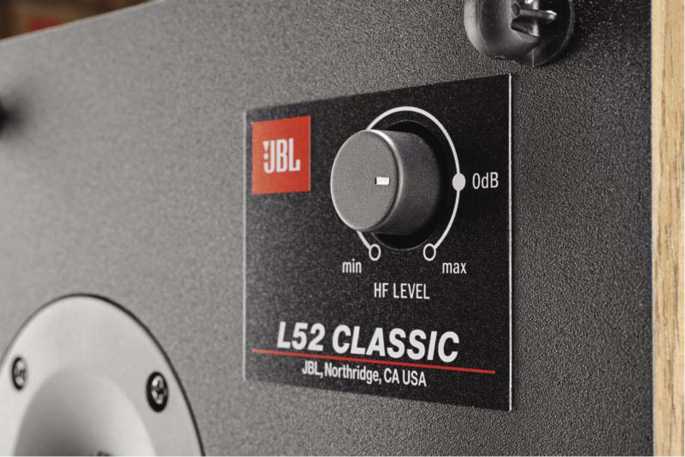
The orchestra was accurately balanced across the frequency range with Vivaldi’s Concerto in D Minor, Opus 4 No8 (DSD). Still, I was – after lengthy listening – beginning to realize that a certain slight boxy quality was coming from the front-firing ports, the reason that ports are best (and most commonly) placed on the rear. It may well be that the front port and Quadrex foam grille are the Classic bits in JBL’s description because, otherwise, this is a loudspeaker of thoroughly modern sound balance.
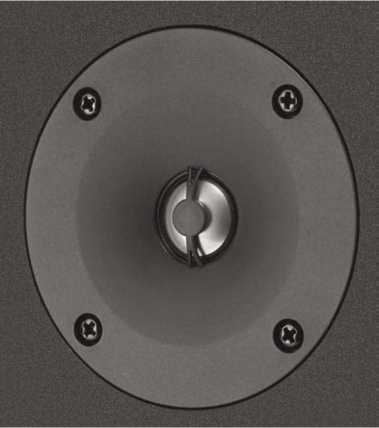
CONCLUSION
Our JBL reviews consistently indicate that this large U.S. loudspeaker manufacturer engineers their products for accuracy – and that’s what I found with the L52. But its titanium dome tweeter had a somewhat hard quality and was conspicuous in its output even when set flat at the HF Level control. It could be dialed back a bit to facilitate this.
There was little low bass, but in a small, resonant room, with placement against a rear wall, this may well be balanced out by ‘room gain’ and not be apparent. Under such conditions, the L52 would indeed give a speedy modern sound from what appears to be a retro design. At the price, it has plenty of competition from Wharfedale, Q Acoustics, KEF, and others, all of whom offer similar accuracy and greater sophistication. None offer adjustability, though, where highs can be dialed back – a feature that makes the L52 stand out.
MEASURED PERFORMANCE
With the ‘HF Level’ control (tweeter level) set to its 0dB position, the L52 Classic measured close to flat from 55Hz to 20kHz, our analysis shows, with the front grille removed. Although the foam grille is thick, there was no difference in this result. Rotating the control to Max gave a small lift of +2dB above 3kHz, enough to add a slight sheen. Rotating the control to 12 o’clock gave a similar cut, introducing a strong cut until the tweeter stopped working.
The bass extension was fair for cabinet size, and the small front port tuned to 60Hz -see impedance trace dip – contributed to output down to 40Hz. Small ports provide little acoustic power; however, deep bass will not be apparent. However, the L52 Classic has plenty of upper bass around 60Hz, which will be obvious, especially in a small-ish room 12 feet long or less.
Sensitivity was on the low side at 85dB sound pressure level (SPL) from one nominal Watt (2.8V) of input, but this is sufficient for going loud with 60W+ amplifiers. JBL unsurprisingly uses a 4 Ohm bass unit for best voltage sensitivity, resulting in a measured impedance (with pink noise) of 6 Ohms, which is right on the market target. Our impedance curve shows the load is mostly resistive, with just small residual (reactive) peaks around port resonance at 60Hz.
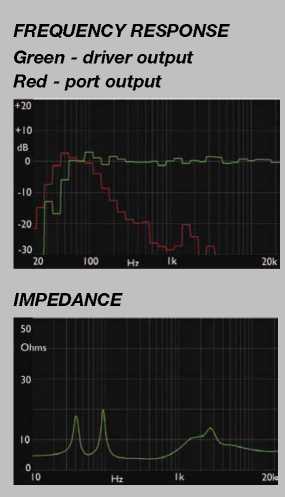
The JBL L52 Classic is surprisingly accurate; its titanium tweeter has a corrective phase plate that runs smoothly and flat to 20kHz. The bass extension is good, too. A carefully engineered loudspeaker that is accurate and adjustable.
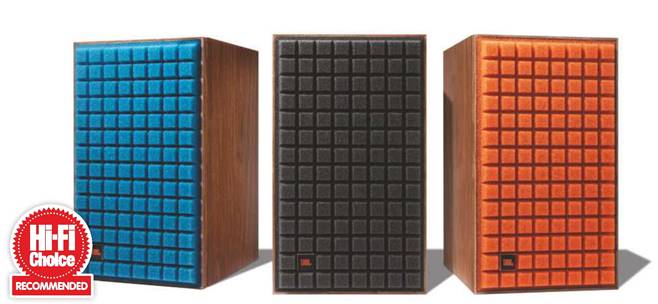
OUR VERDICT
When you purchase through links on our site, I may earn an affiliate commission. Here’s how it works.
New! JBL L52 Classic Speaker Review
The JBL L100 was first launched in 1970. It is fair to say that it is now considered an Iconic speaker. JBL have just launched the ...










